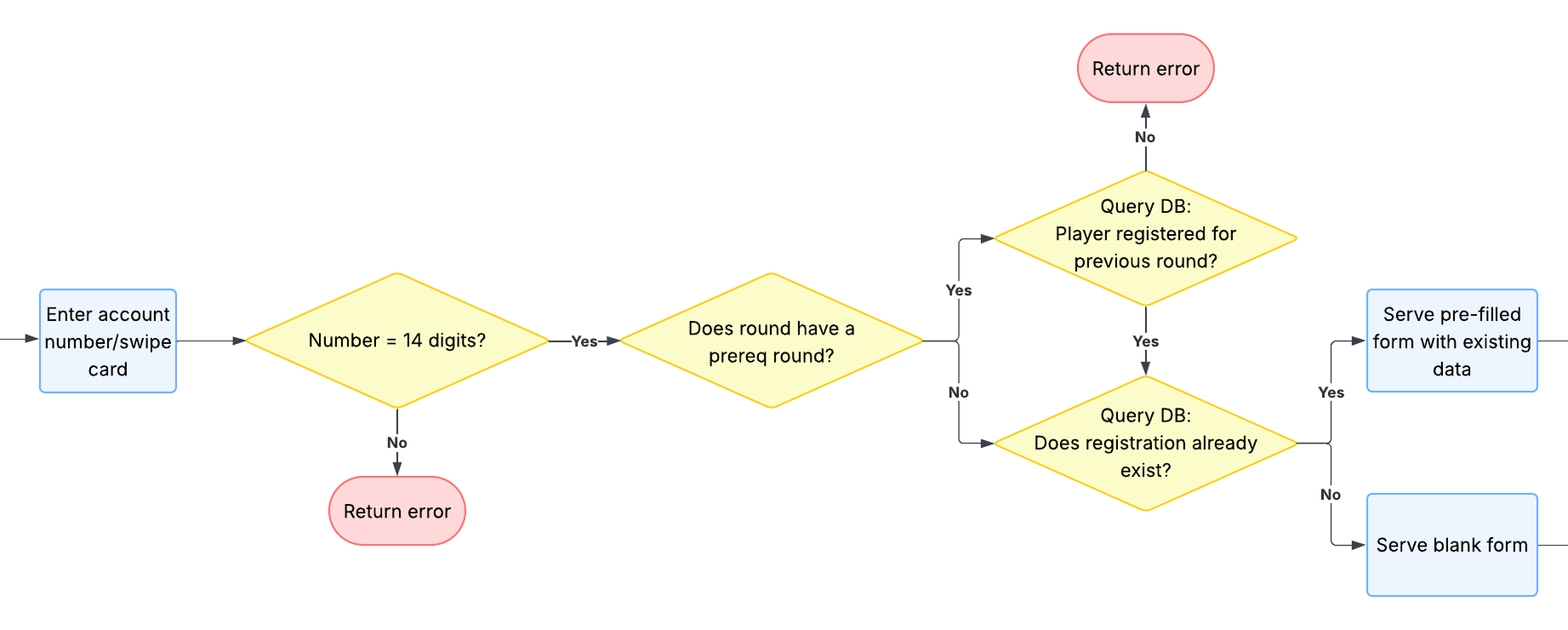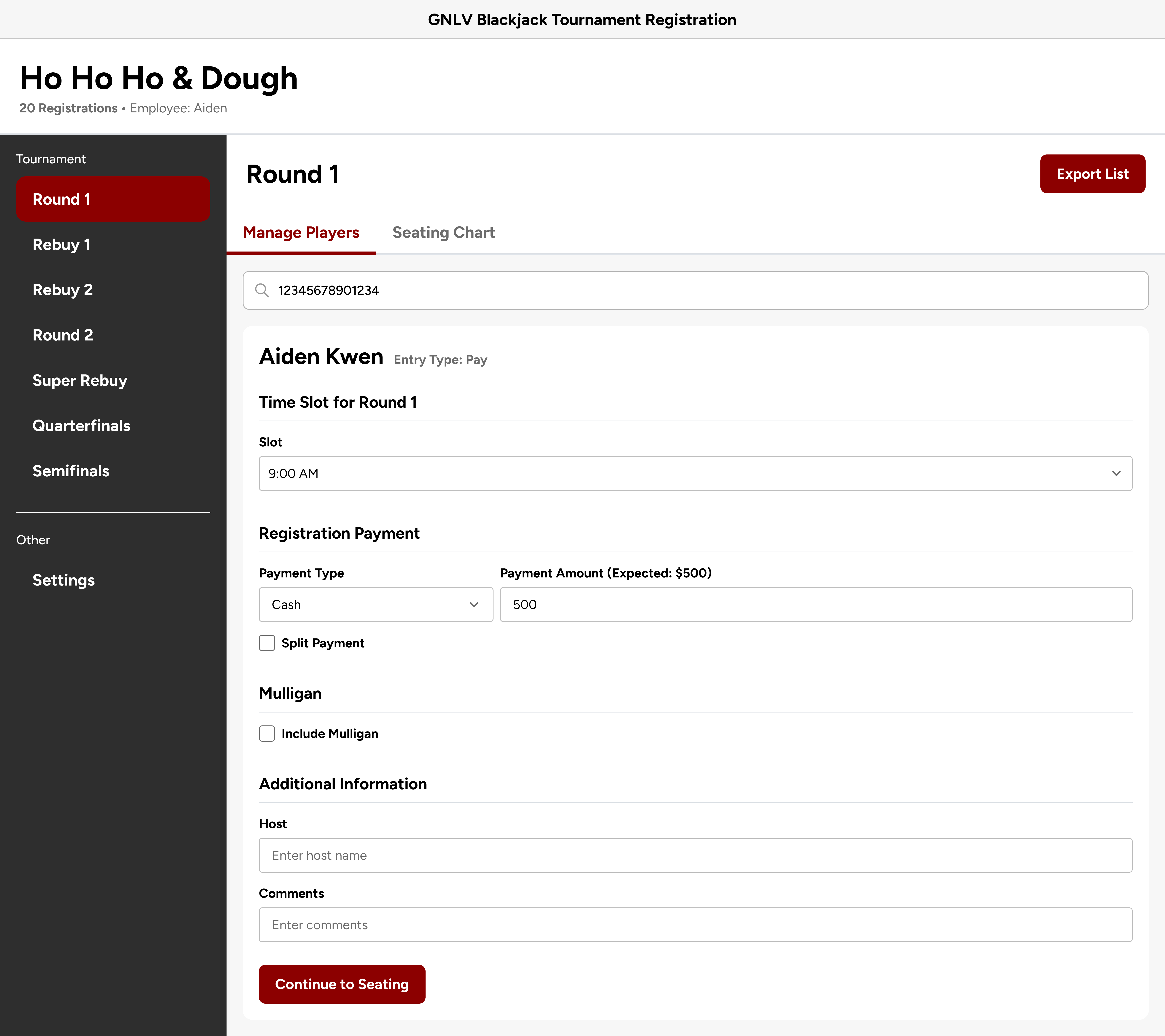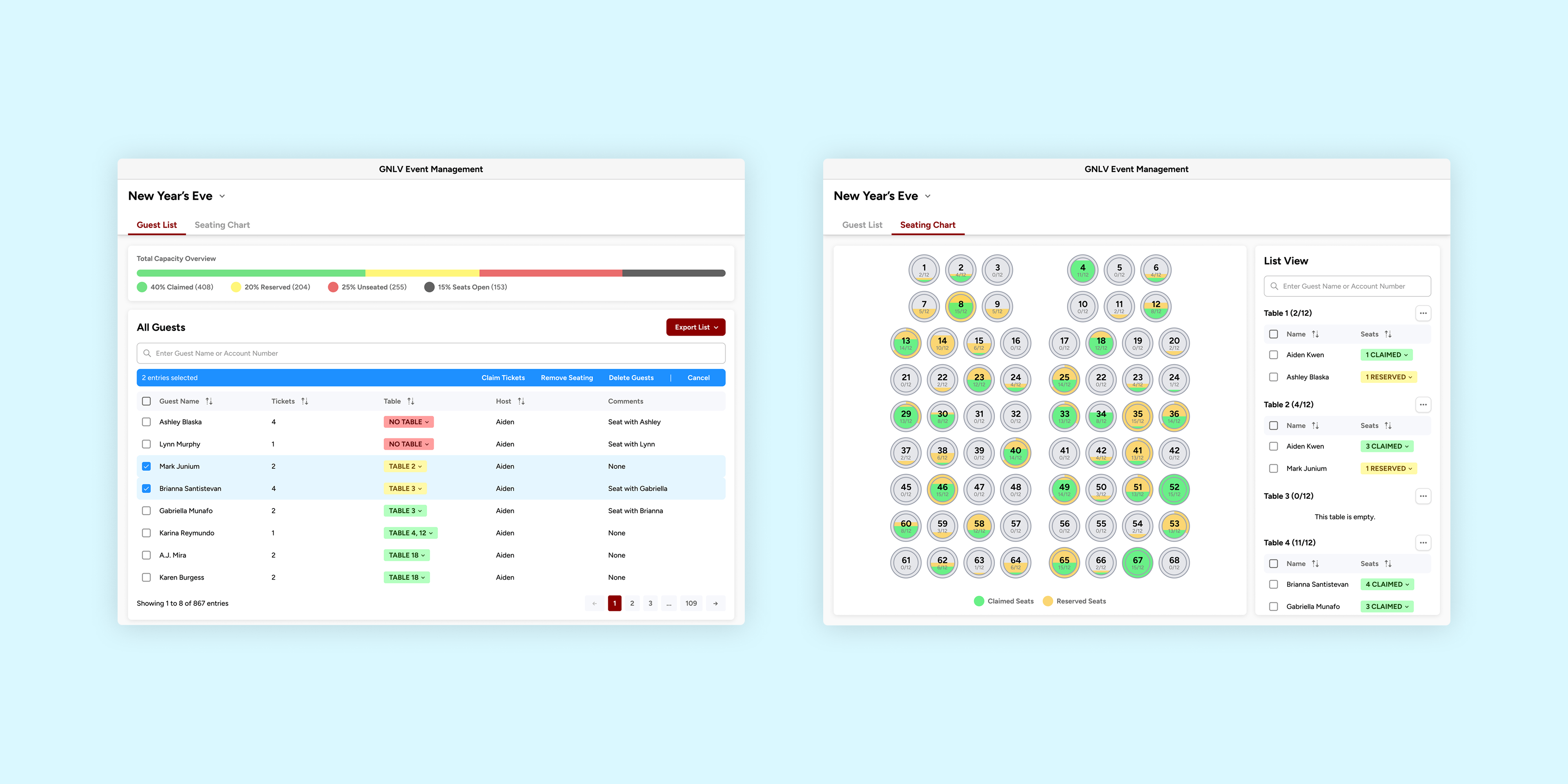USER RESEARCH
"I hate the tool we're using to register people for our blackjack tournaments!"
The first thing I learned about the Special Events team’s operations—by complete accident—was how many problems their tournament registration tool was causing them.
To better understand staff's current workflow, I interviewed GNLV’s Director of Marketing Operations and volunteered in-person at a blackjack tournament to see the tool used in a live tournament environment firsthand.
Registration Flow (repeated every round)















